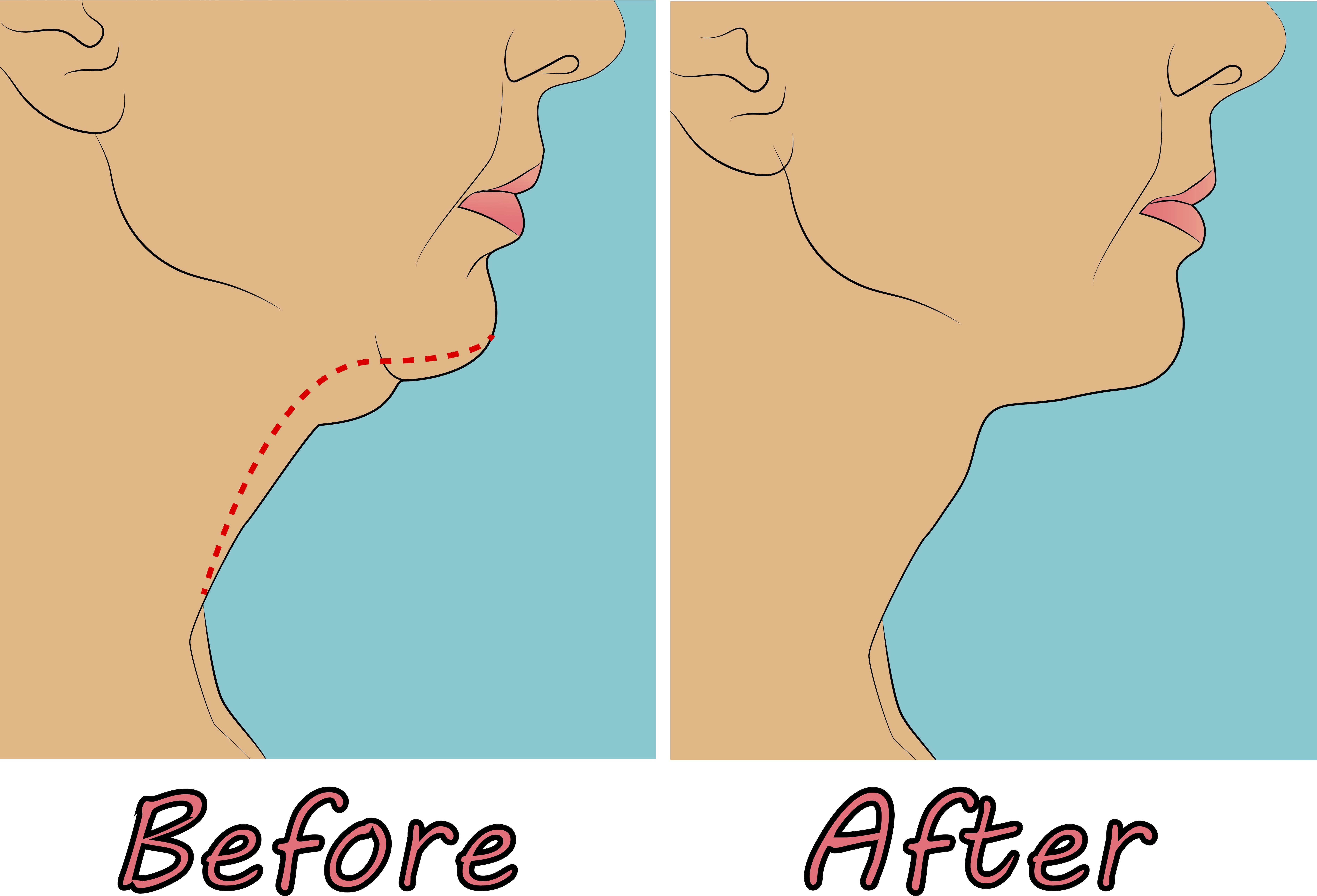
Dr. Menachof, MD, FACS has performed thousands of facial plastic surgery procedures in over 20 years of experience. He has been recognized as a Fellow by multiple academies, named one of America’s Top Facial Plastic Surgeons continually since 2003 and is featured in multiple national publications.
 Before you get a facelift, it is important to know the common side effects that come with the procedure. Patients tend to experience pain, bruising and swelling post-surgery — symptoms that will subside over time at different rates. Beyond the common side effects, some patients may experience ear discomfort or facial infection – two facelift concerns that we have outlined below. Keep in mind that every individual heals differently, but the healing process will not be overnight.
Before you get a facelift, it is important to know the common side effects that come with the procedure. Patients tend to experience pain, bruising and swelling post-surgery — symptoms that will subside over time at different rates. Beyond the common side effects, some patients may experience ear discomfort or facial infection – two facelift concerns that we have outlined below. Keep in mind that every individual heals differently, but the healing process will not be overnight.
Facial Swelling
Facial swelling will take the most amount of time to fully disappear. A facelift disrupts your lymphatic vessels, causing the damaged tissue to hold more fluid. Redness and heat in the affected areas are caused by an increase in blood flow and movement of fluid to the area of inflammation. When the vessels reconnect and begin to function, proper lymphatic drainage will return and the swelling will go away.
Before the procedure, talk to your surgeon about possible swelling. For some surgeries, swelling can indicate healing or infection. The following guidelines regard normal post-op swelling — if you or a loved one is experiencing abnormal lumping or pain, consult your surgeon right away.
Swelling Recovery Timeline After Facelift
Swelling after a facelift will be different for everyone, but typically:
- Most of your swelling, up to 60 percent, will disappear in the first couple of weeks after surgery, but then the wait begins for the remainder to subside.
- After three months, 80 percent of the swelling will be gone.
- After six months, 90 percent of the swelling will be gone.
- The last 10 percent can take almost a full year to fully disappear.
After three months, the swelling will usually not be noticeable, and in general, most people feel they look their best at this time. However, the patient will be able to tell that the swelling is not fully healed at three months because the facial tissues will still feel firm. In general, the swelling will be prolonged if the central face or cheek area is manipulated during the facelift.
Swelling after a facelift is normal and expected. Everyone heals differently—but some retain a little more fluid for a longer period of time. Most can return to work and play two weeks following the procedure, and on average, patients can be presentable with makeup in 14 days.
If the fluid is leaking from a closed incision, follow up with your surgeon. If it is a small amount of fluid, the body will eventually reabsorb it. If it is a larger amount, a drain and compression may be required. It’s important to drain the fluid to avoid potential infection, so the skin can properly tighten for a smooth facelift contour.

Post-Facelift Swelling Treatment Options
Every patient needs to be treated differently. We will need to examine your specific case in order to provide further instruction, but in general, we have a few tips to help keep your swelling down:
- Some surgeons advise that patients wear a compression garment for the first two days following surgery. If an area of the neck was involved in the procedure, the garment may need to be worn for up to a week. These garments help improve blood circulation, minimize swelling and accelerate the patient’s healing process.
- A low salt diet starting before surgery and continuing after surgery can also minimize fluid retention, along with sleeping with your head elevated for the first two weeks following the procedure. Apply a cool compress religiously during the first few days following surgery, and 10 days after, participate in a gentle lymphatic massage once a week.
- Lymphatic massage will help relieve the swelling. To engage in this type of massage, apply firm but gentle pressure, and push the fluid out of the swollen area by moving your hands in an upward direction. This will assist the remodeling vessels to best match your facial contour. Massaging sutures will also help with their healing process.
- If you have lumps and irregularities, or if you are concerned about your facial swelling, visit your plastic surgeon and he or she will guide you further.
Keep in mind that swelling will return to normal as time passes — recreating the lymphatic vessels takes time.

Infection After a Facelift
Any type of surgery poses the potential risk for infection. The skin is a natural barrier against germs, so when the skin is opened during a procedure, exposure to unwanted bacteria increases.
It is important to treat any infection as soon as possible because infection will affect the facelift healing process and the final result.
Symptoms of Infection
Be aware of the signs of infection before you get your facelift, and be sure to call your surgeon if you experience any of the following symptoms:
- High fever, greater than 101.5 F
- Increased pain, redness, warmth, odor or discharge at the incision site
Your surgeon will be able to determine the best course of action for you if your facelift incision site is infected or is starting to necrotize. Be sure to follow their instructions to get the facelift results you want.
If the facelift incision site is infected, the body’s immune system will initially kick in to destroy the bacteria before they settle and multiply. The healthier you are going into the surgery, the better your immune system will be able to fight off infection.
The first step to preventing infection is choosing a surgeon. Make sure you choose a qualified and experienced surgeon with a clean and sterile work environment.
Ear Issues After a Facelift
After a facelift, it is possible that any surrounding areas on the face or head can be affected. Every patient is different though – some patients will not experience intense symptoms, while others may experience symptoms at different stages in the healing process. Keep in mind that your surgeon is available for you to express any concerns or discomfort you may be having after a facelift.
Ears Burning After Facelift
Some patients may experience itching, burning, tingling or lightning/electricity sensations in their ears following a facelift. When skin is separated from underlying tissues during a facelift, small sensory nerves are cut. As these nerves reconnect to the skin, varying degrees of numbness may be present. As the nerve endings regenerate and awaken, they are occasionally irritable, causing patient discomfort.
The nerve reconnection process can take from two to six months, but the uncomfortable sensations should diminish in the first month after surgery. During this phase of the healing process, ice, anti-inflammatories and gentle massage can help the discomfort.
If you have concerns about the facelift procedure and the healing process, discuss them with your surgeon, no matter where you are in the surgical process.
Earlobes Swollen After Facelift
Any features surrounding the lifted area of the face can be affected. Earlobe swelling after a facelift is most common in patients with detached earlobes (before surgery), meaning that their earlobes hang freely next to the jawline and are not attached. The detached earlobe is section of tissue at the bottom of the ear, so, as ear lymphatic drainage flows downward, it will gather in the earlobe making them swollen.
Engage in gentle massage to help relieve the swelling, avoid heavy earrings and be patient at this time.
If you are concerned about the size of your earlobe(s) after surgery, earlobe reduction surgery is an option, but it is best to wait until all swelling has subsided after a facelift to pursue any other surgeries.
Meet with your surgeon to discuss detailed practices to reduce swelling, ear discomfort, infection and other facelift side effects.

This blog was originally posted in June of 2018 and has been reposted in 2020 with updated information.




